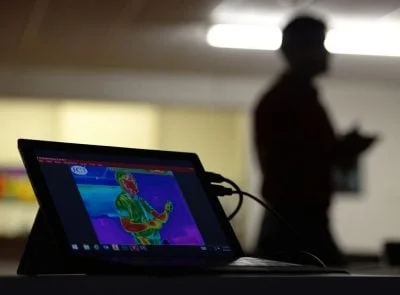As states adapt their COVID-19 restrictions, business owners strategically prepare for a safer return to work. For many, reopening is tantamount to survival. 3.3 million owners lost their businesses from February to April alone. Additionally, reports estimate that 35.1 million employees could be out of the job if the public health crisis persists into 2021. The reopening of businesses will provide some much needed financial relief. This affects not only employers but also their workforce.
The complication owners face is a growing number of liability lawsuits as employees return to work while the crisis is still ongoing. Claims that an office has failed to take necessary health and safety precautions can cost businesses millions. Even without this threat, it is imperative for businesses to focus on the health and safety of employees while factoring in liability. This is possible only if owners begin making necessary changes to control and manage biorisk in the workplace. By making the following updates and adjusting to the new era of health and safety, you can prepare for a safe and successful return to work for all.
What measures can I take to make the workplace safer?
The CDC’s return to work guidelines highlights the need to make changes both to the workplace and to the way employees carry out their work. Offices should create a comprehensive plan based on a workplace hazard assessment. Use control measures to identify hazards. Employee education and involvement are key. Workers should know the ways that COVID-19 transfers and feel confident that your business is adjusting to keep them safer.
CDC controls include requiring face coverings, health screenings, and spacing out workstations. Offices should increase disinfection practices and eliminate high-touch items like coffee pots. Encourage sick employees to stay home, consider shift-staggering, and incentivize low-risk transportation methods.
Workplace hazard assessment
Prepare the office to get back to work safely after COVID-19 with a workplace hazard assessment. Inspect the facility for any areas where the infection is likely to spread, like meeting rooms, check-in areas, and routes like hallways. Follow through by reducing these risks, and supply employees with PPE for jobs where it is necessary. Ensure ventilation systems work properly, and consider increasing airflow with fans or windows. Listen to the manager and employee concerns and be flexible when making changes to meet their needs.
Employee health checks
Back to work guidelines also recommend utilizing employee health checks. Ensure that employees are free of COVID-19 symptoms before they enter the workplace. Symptoms include fever, cough, sore throat, or breathing troubles. The CDC points out that screening questions should focus on “new” symptoms, as chronic symptoms are likely not a sign of infection. Temperature checks are uniquely useful for screening purposes. Anyone with an elevated temperature of 100.4 F or higher should not be allowed in the workplace.
How do I prepare employees to get back to work safely?
To prepare employees for returning to work after COVID-19 closures, consider both their health and wellbeing. You might:
- Send a welcome back email or host an informative event to explain work adjustments.
- Provide resources for personal hygiene and cleanliness.
- Set up disinfection stations in the office.
- Provide extra wellness resources such as virtual seminars.
- Give workers a space to express any concerns or problems they might have.
- Provide education about work from home and sick leave policies.
- Take precautions such as employee health checks to put workers at ease.
These actions promote a positive company culture and open communication. They also help you to assess employee concerns so you can better adjust business practices.
What are the return-to-work instructions for employees with COVID-19?
The CDC return to work guidelines requires employees to isolate themselves at home after testing positive for COVID-19. Provide these employees with resources for what to do when sick. Other employees who were in close contact with the infected worker should also quarantine or work from home for 14 days in most cases.
Per the CDC, employees with COVID-19 who are symptomatic can return to work:
- 10 or more days after showing symptoms and
- 24 hours after fever ceases without fever-reducing medication and
- After other symptoms decrease
Employees without symptoms can return to work 10 days after first testing positive. To reduce corporate liability and further risk, employers should close off the sick employee’s work areas and wait 24 hours to disinfect them. Inform all coworkers of the potential infection risk while protecting the privacy of the sick individual. Consider implementing precautions like ICI’s Biorisk Management Platform to further reduce liability.
Get back to work safely with a biorisk management solution
By making necessary workplace changes and preparing your employees, you provide a safer return to work for all. Adapt to the changing times, revise your outdated safety plans, and ensure your business thrives. Infrared Cameras, Inc. is here to prepare businesses to meet the new imperatives brought on by the COVID-19 pandemic. Contact us to find out how our Biorisk Management Platform can protect your employees and safeguard your company.







